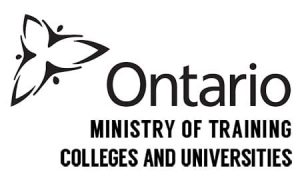Are you thinking about becoming a paramedic? This is a great career choice for people who want to make a difference. As a paramedic, you’ll provide pre-hospital care to patients and help save lives. To plan your career change, you’ll need to know how to become a paramedic.
Here’s how to become a paramedic in five steps.
1. Enroll in a Paramedic Diploma Program
To become a paramedic in Ontario, you need to enroll in a paramedic diploma program. Diploma programs are offered at public colleges and private career colleges throughout the province. Choosing a college is a big decision, so take your time and carefully research your options.
To choose the right college for you, consider the college’s location, the price of tuition, and the college’s reputation. If possible, take a tour of the college to see if you like the environment. It’s a good idea to talk to current or previous students, too. Once you’ve made your decision, send in your application and wait to hear back.
2. Graduate with a Paramedic Diploma
If you’re admitted into a paramedic diploma program, you’re one step closer to becoming a paramedic. In college, you’ll learn a mixture of theoretical and hands-on skills. The exact program content can vary from one college to another. To get specific information about program content, you’ll have to reach out to the college you’re interested in.
Generally, paramedic students learn about topics such as anatomy, pathophysiology, pharmacology, and psychology. They also learn about first aid, emergency medical patient care, and emergency trauma patient care. Students also learn about ambulance operations, human relations, and ethical issues.
The goal of these classes is to prepare you for the day-to-day tasks you’ll face as a paramedic.
3. Pass the Certification Exam
Once you’ve graduated from college, you need to pass a certification exam. This exam is called the Advanced Emergency Medical Care Assistant (A-EMCA) exam. The multiple-choice questions are based on scenarios from real ambulance calls. You’ll answer questions about everything from the ambulance act to infection control to vehicle operations.
You get three attempts to pass the A-EMCA exam. A passing score is 70 percent or higher. If you fail three times, you can take part in remedial training and then try one more time. Though, if you study hard while you’re in college, you don’t need to worry about failing.
4. Apply to Work as a Paramedic
After you’ve graduated from college and passed the certification exam, you can start looking for work. There are many possible employers for paramedics. You probably already know that paramedics can be employed by ambulance services. If you don’t want to work for an ambulance service, there are many other places you could work.
Hospitals or fire departments may need paramedics. Paramedics can also be employed by government departments or agencies. Some private companies need paramedics, too. For example, manufacturing firms or mining companies could need paramedics on-site. When you’re job hunting, keep an open mind. You could be surprised at the great opportunities you find at unlikely companies.
5. Pass Pre-Employment Testing
The interview process for paramedic jobs is a little different than what you might be used to. In addition to a personal interview, you’ll need to perform pre-employment testing. This testing shows your potential employer that you can do the job.
The testing process can vary from one employer to another. You can expect to be tested on driving skills, lifting abilities, and response to trauma patient care scenarios. After graduating from college and passing a certification exam, you shouldn’t have any trouble with these tasks.
Now that you know how to become a paramedic, it’s time to enroll in a diploma program and get started.






